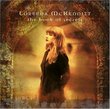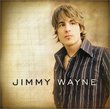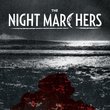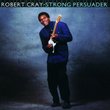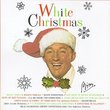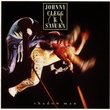| All Artists: Dillards Title: There Is a Time 1963-70 Members Wishing: 9 Total Copies: 0 Label: Vanguard Records Release Date: 11/27/1991 Genres: Country, Folk, Pop, Rock Styles: Bluegrass, Classic Country, Traditional Folk, Country Rock Number of Discs: 1 SwapaCD Credits: 1 UPCs: 015707003124, 015707013147 |
Search - Dillards :: There Is a Time 1963-70
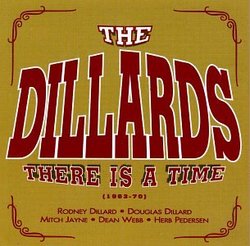 | Dillards There Is a Time 1963-70 Genres: Country, Folk, Pop, Rock
The Dillards combine accomplished picking and harmonizing with a forward-looking approach to bluegrass. These 28 songs follow them from 1963's tradition-based quartet to 1965's fiddle-soaked instrumental virtuosity to ope... more » |
Larger Image |
CD DetailsSynopsis
Amazon.com The Dillards combine accomplished picking and harmonizing with a forward-looking approach to bluegrass. These 28 songs follow them from 1963's tradition-based quartet to 1965's fiddle-soaked instrumental virtuosity to open-minded country rock. In a way, their progression makes perfect sense: With their Ozark Mountain upbringing as the foundation, the Dillards absorbed a variety of influences from their new big-city home. The early quartet-with guitarist/vocalist Rodney Dillard, amazing banjo picker Doug Dillard, and mandolinist Dean Webb-offer rousing gospels, a Dylan cover, and classic folk and bluegrass originals such as "The Old Home Place." Fiddler Byron Berline joins the fray in 1965 for potent hot-picking displays. Their later work, featuring Herb Pedersen, adds drums, pedal steel, electric guitar, and even orchestras. Few bands balance the past and the future as successfully. --Marc Greilsamer Similar CDs
Similarly Requested CDs
|
CD ReviewsI got yer bluegrass bible & country-rock primer right HERE! Kevin Cook | McDonough, Georgia USA | 12/13/2001 (5 out of 5 stars) "'There Is A Time' is a very satisfying chronicle of The Dillards in the Sixties, with heaping helpings of music representing their growth from journeymen paying homage to the bluegrass gods, to adepts tweaking the same gods' noses and, ultimately, to their most interesting incarnation: cracker-barrel mystics on their seminal albums "Wheatstraw Suite" and "Copperfields," evoking lush earth tone idylls to rival The Beatles' psychedelic ones The salad days of The Dillards and The Beatles, in fact, were roughly concurrent, but otherwise their stories couldn't be more different. In the beginning (1962), The Dillards were just a little old bluegrass band out of Salem, Missouri who happened to play better, sing better and write better than just about any of their contemporaries. Then, when all but one of the founding members (preternaturally gifted banjoist Doug Dillard, who left in a huff) began to feel like they had mowed all the color out of bluegrass and wanted to try something different, The Dillards recruited Herb Pedersen and midwived a cool, rootsy new musical critter. Somebody with no imagination dubbed the sound 'country rock.' What it was, really, was Dillards Music. And it sounded like nobody and nothing else.The upshot? In the 1970s, psuedo country-rock bands (especially The Eagles) made a mint homogenizing The Dillards' straight-from-the-cow sound. The Dillards, meanwhile, languished in relative obscurity, even as they continued to experiment and embrace a more electric sound on such LPs as "Roots and Branches," "Tribute to the American Duck" and "The Dillards vs. the Incredible Flying L.A. Time Machine."If you're an early Eagles fan, I urge you to do yourself a huge favor: Buy this album and hear the difference between real mooing (so to speak) and a See & Say toy.There's nary a mutt in the bunch and every song is sure to be someone's favorite. For me, one of those is 'Old Man at the Mill,' a song The Dillards transform from a hickish hoedown tune into the first - maybe only - example of square-dance rock. Heaven help me, it makes me want to put on yellow socks and a purple tie with acorns on it and dance like Gomer Pyle. I'm also partial to 'Nobody Knows,' 'Listen to the Sound,' 'Rainmaker' and 'Copperfields,' all of which deserved to be huge radio hits and would have been, had fate been kinder to the star-crossed Dillards.Oh, and please tell Rod Stewart that Rodney Dillard sang the definitive version of 'Reason to Believe' long before anyone thought he (Stewart, that is) was sexy.My only complaint: There ain't a single one of Mitch Jayne's knee-slapping monologues from 'Live!!! Almost!!!' Folks, I assure you, this is a sacrilege.One more thing. If you can listen to overgrown choirboy Herb Pedersen sing the daylights out of 'She Sang Hymns Out of Tune' - a song so hauntingly sad, it not only would've made sentimental TV sister Charlene Darling cry, but probably want to hurl herself off the Robert E. Lee natural bridge in despair - and not miss your mama...my friend, your heart is a brick." A gem. Marjorie Parent-Greenman | 11/15/2000 (5 out of 5 stars) "Like most of the reviewers, I first heard The Dillards on "The Andy Griffith Show" and for years never thought of them until Nick at Night began running the show again. I bought this particular cd because it has "There is a Time" on it and I can still see Charlene and the boys singing this in Andy's living room. I was overwhelmed by how much I like the whole album. From "Copperfields" to the end of the album appeal more to me than some of the others. "She Sang Hymns Out of Tune" entranced me and maybe enchanted me too. I think many of us who became politically aware in the '60s will have a real connection to this album. All in all it's a treasure." Wonderful Collection James Cantrell | Tennessee | 08/31/2005 (5 out of 5 stars) "If you are a bluegrass fan, unless you own all of the Dillards's 1960s albums, this is a must-have collection. The Dillards are inferior to the trio of bluegrass immortals (Monroe, Stanley Brothers, Flatt&Scruggs) only in coming later and in recording many fewer songs. The picking on 'Banjo in the Hollow,' to name one example, is simply amazing and roughly equal to anything the masters recorded. 'Old Blue' will break your heart, especially if you love 'Where the Red Fern Grows' and similar tales of man's best friend. 'Dooley' should become your favorite moonshiner.
The end of this disc shows the Dillards in a role that few know about them: helping to create what we generally came to call country-rock. I admire Gram Parsons greatly, but I must acknowledge that he was not alone in his desire to reveal the Country that roots at the heart of the best rock 'n' roll and to use the earthy vibrancy of rock 'n' roll to re-invigorate Country and free it from its growing Countrypolitan tendencies. The Dillards moved their music to do much the same, save that they came from bluegrass. And that draws our attention back to Elvis, who announced his rock 'n' roll by taking the waltz bluegrass Monroe standard 'Blue Moon of Kentucky' and speeding it up. Elvis knew that the 'new' music he was beginning to make had not merely Hank Williams and Lefty Frizell, Bob Wills and the Delmore Brothers, all over it, but that it also was fathered by bluegrass. The Dillards moving from pristine bluegrass to country-rock shows the ties and the progression as well as Parsons using the Louvins (the bluegrassy 1950s honk-tonk act, if you will) to bring out all the Country that trussed the Byrds. This album then is not necessary for just bluegrass fans; it is equally important to anyone who loves Gram Parsons and country-rock. Listen to 'There is a Time,' and then realize even more fully how utterly awful and poppish contemporary Country is, how disgusting and perverse MTV is, how dead is the country-less rock." |

 Track Listings (29) - Disc #1
Track Listings (29) - Disc #1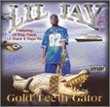
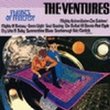
![Live At Sin-e [Import]](https://nationalbookswap.com/cd//m/44/6744/386744.jpg)

